Physical Address
304 North Cardinal St.
Dorchester Center, MA 02124
There are two forms of transposition of great arteries (TGA): complete and corrected.
A conotruncal anomaly characterized by a discordant ventriculoarterial connection. Complete TGA affects approximately 3 : 10,000 newborns.
Complete TGA is defined by normal atrioventricular concordance associated with an abnormal ventriculoarterial connection. The pulmonary artery arises from the morphologic left ventricle and the aorta emerges anteriorly from the morphologic right ventricle.
Complete TGA accounts for 6% to 8% of all CHDs at birth, but it represents only 2% to 3% of prenatally detected CHDs. Detection rates increased to 40% to 50% when guidelines included evaluation of the outflow tracts during cardiac screening. Isolated complete TGA is very rarely associated with chromosomal or extracardiac anomalies, but other CHDs are common, most typically ventricular septal defects (30%), pulmonary stenosis (15%), and aortic arch abnormalities (5%).
A multifactorial CHD, risk factors such as maternal diabetes, and exposure to drugs have been reported. Gene mutations have been described in anecdotal cases. Complete TGA results from abnormal inversion and spiraling of the conus arteriosus and truncus arteriosus, which occurs in the fifth week of embryonic life. The atria and ventricles retain their normal anatomy, a subaortic infundibulum separates the aorta from the tricuspid valve, and there is fibrous continuity between the mitral and pulmonary valves. Coronary arteries originate in the aortic sinus. The key problem is that the systemic and pulmonary circulations run in parallel, preventing normal blood oxygenation and resulting in severe hypoxemia after birth.
There is severe hypoxemia, central cyanosis, and cardiac failure at birth, the severity depending on the function of right-to-left shunts of the fetal circulation. Cases with restrictive foramen ovale, or ductus arteriosus, or with intact ventricular septum, have a worse evolution.
The crossover of the great arteries while moving from the five-chamber to the three-vessel and trachea views cannot be identified.
The four-chamber view is typically normal ( Fig. 86.1 ), although leftward deviation of the cardiac axis is common.
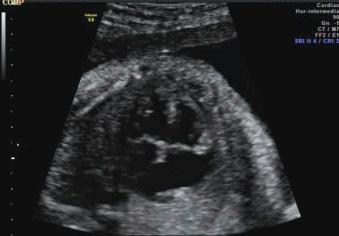
The five-chamber view or long-axis view is normal, with septopulmonary continuity. However, the vessel arising from the left ventricle, the pulmonary artery ( ) bifurcates into right and left pulmonary branches ( Fig. 86.2 ).
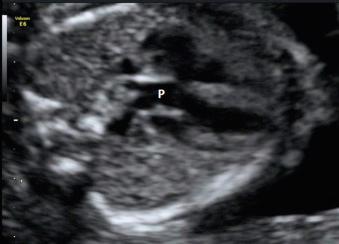
Crossover of the outflow tracts cannot be identified, because they run in parallel ( Fig. 86.3 ).
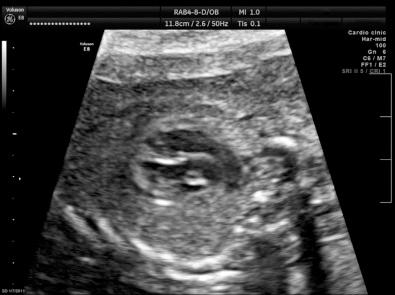
The three-vessel and trachea view is usually abnormal with only two vessels ( Fig. 86.4 ), because the aorta emerges from the anterior–superior ventricle and has a hockey-stick shape, so that it runs in a superior plane with respect to the pulmonary arch.
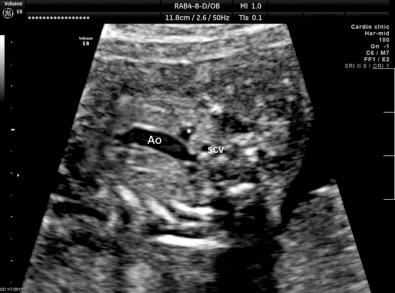
Longitudinal views identify the supraaortic vessels in the anterior aortic arch ( Fig. 86.5 ).
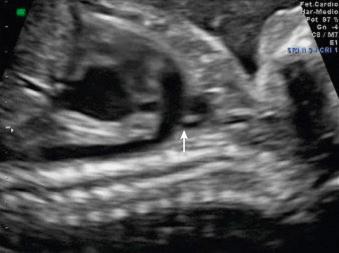
Become a Clinical Tree membership for Full access and enjoy Unlimited articles
If you are a member. Log in here